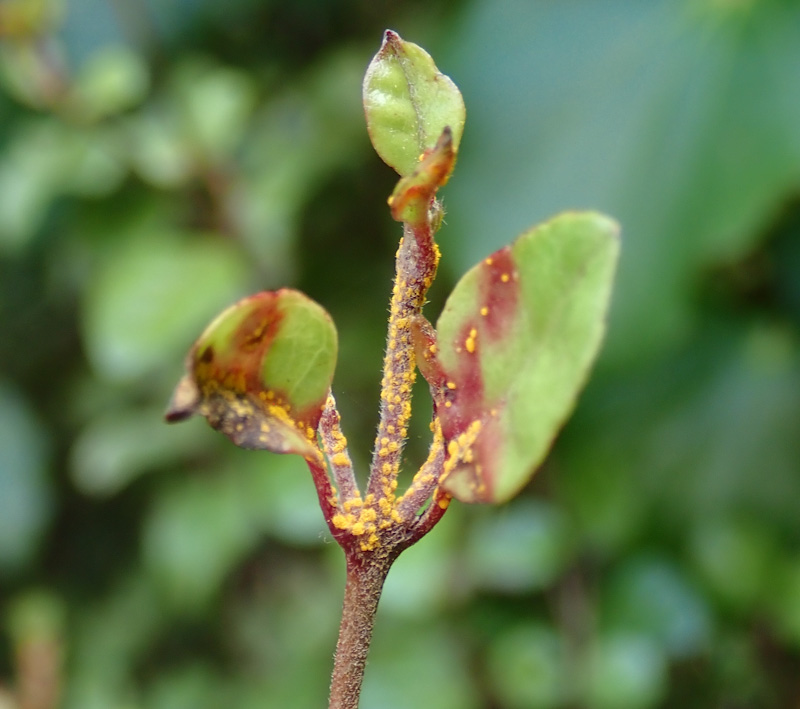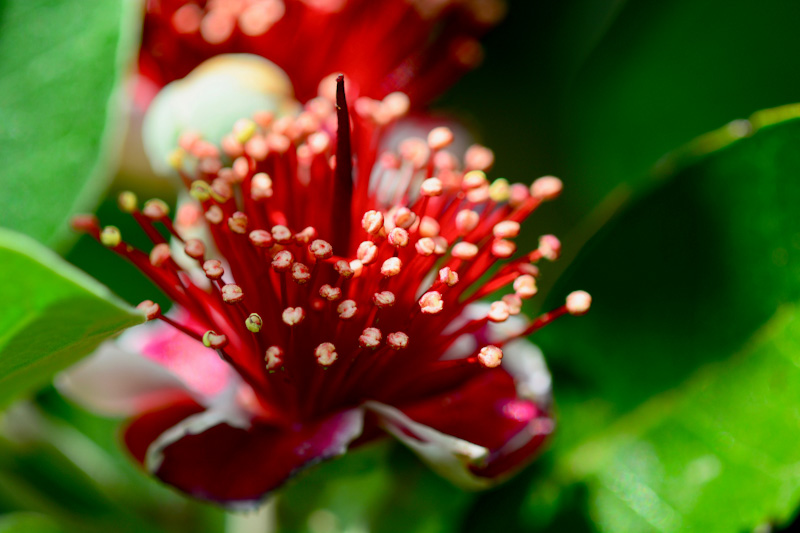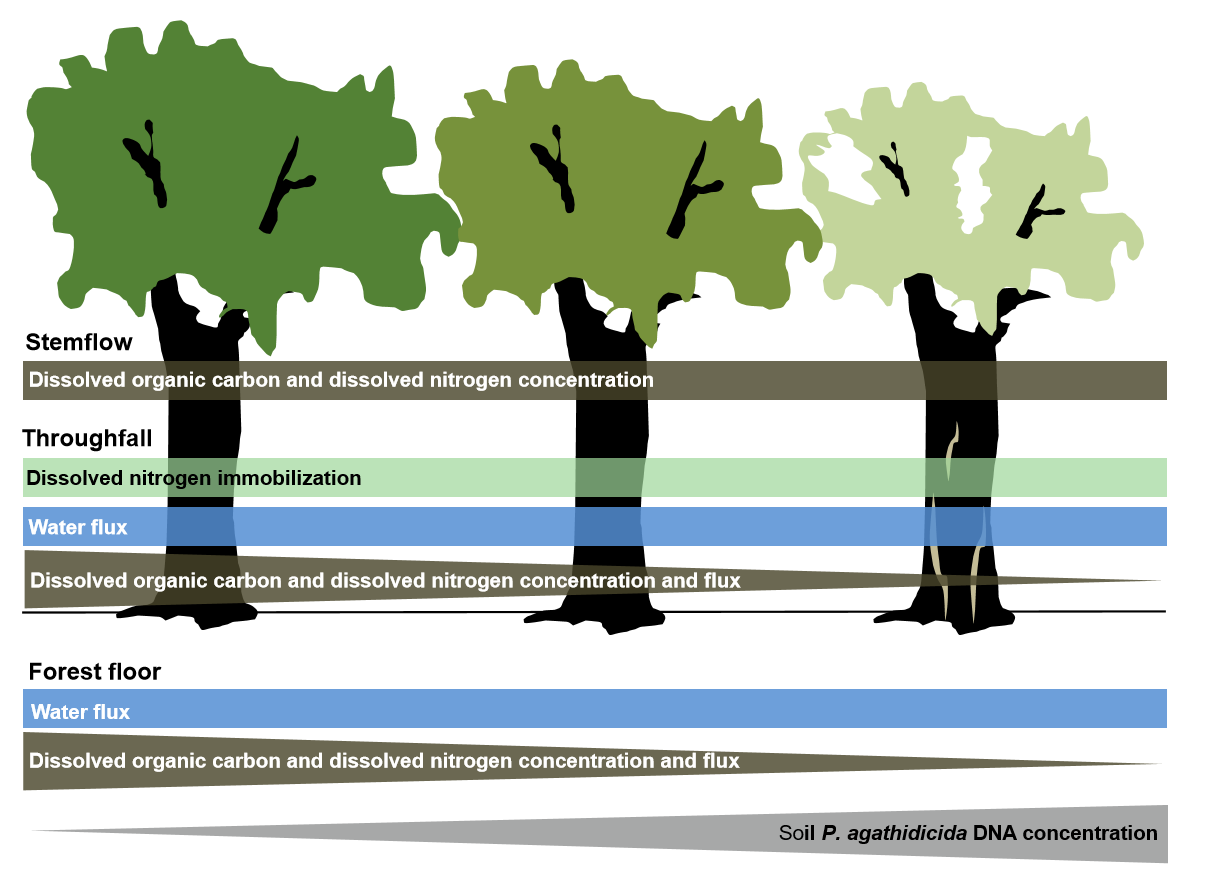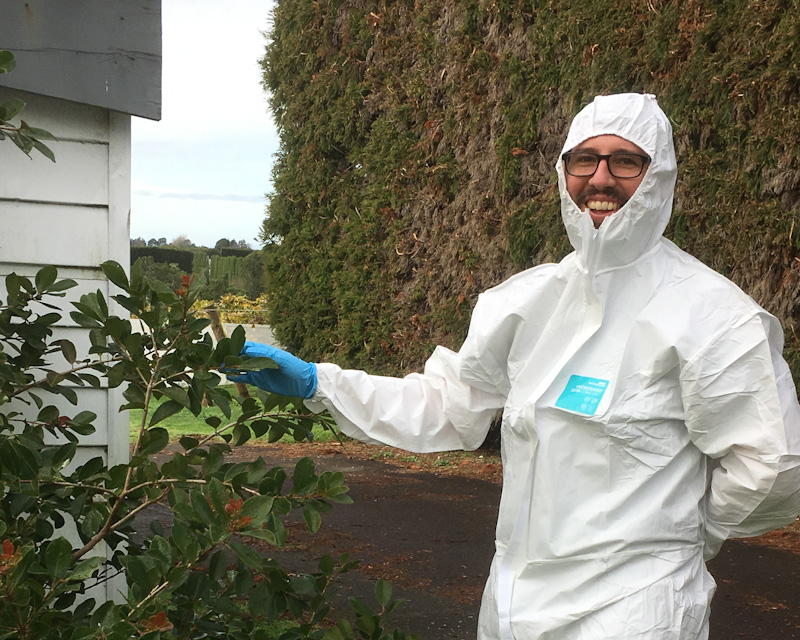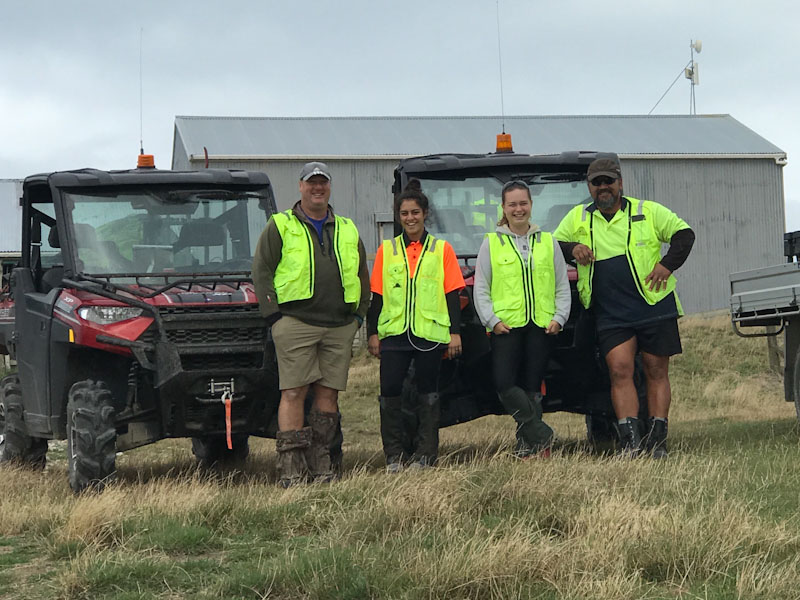We are ‘pushing play’ on an initial $1.78million investment into Tranche 2 research and related activities.
January newsletter – Ngā Rākau Taketake
Myrtle rust infection and research updates, what dissolved organic carbon has to do with kauri dieback, and more . . .
Myrtle rust is having sex – why this matters and what it means for New Zealand
A study has just been published containing new evidence that Austropuccinia psidii, the fungus that causes myrtle rust, is reproducing sexually in New Zealand in addition to cloning itself.
Kauri dieback affects dissolved organic matter cycles
Measuring dissolved organic matter could give an idea of the extent to which trees are infected with Phytophthora agathidicida, according to a recent study.
A new researcher takes the reins at Scion
Dr Stuart Fraser is in the thick of his first field season leading the myrtle rust team at Scion. We sat down with him to get his insights on the disease in Aotearoa and abroad.
Myrtle rust infection updates – 14 January 2020
The team at Scion didn’t stop for long over the Christmas break – this is their latest news about myrtle rust infections at selected monitoring sites in the North Island.
The climate crisis is also a biodiversity crisis
Like many of us, the summer break has seen me transfixed with horror at the scale and magnitude of the bushfire crisis in Australia.
December 2019 newsletter – National Science Challenge
An update on Tranche 2, a fond farewell, tackling toxoplasmosis and more . . .
Beetles helping to manage a common weed in Northland
Brazilian beetles could help control a common weed and regenerate native forest, according to a recent report led by Manaaki Whenua – Landcare Research.
Can feral cat control increase lambing rates?
This summer could tell the Cape to City team if their efforts to control feral cats have paid off.

